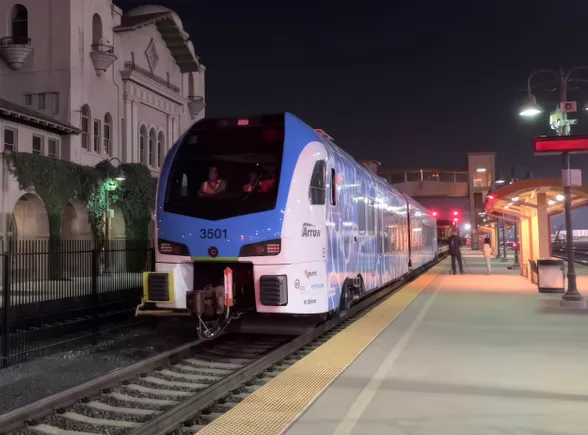Revolutionizing Railways: The Rise of Hydrogen and Battery-Electric Trains Across the U.S.
Key Ideas
- Stadler and other manufacturers are developing hydrogen and battery-electric trains for transit agencies in California, Chicago, and potentially Boston, aiming for zero-emission rail networks.
- California leads the way with a $310 billion plan to establish a zero-emission passenger rail network by 2050, with Stadler's hydrogen-powered train already in testing on the Metrolink commuter line.
- Siemens Mobility and Alstom are also actively involved in the advancement of zero-emission trains, with Siemens focusing on battery-electric and hydrogen fuel-cell trains, and Alstom showcasing successful projects across Europe.
- The increasing interest in zero-emission trains highlights the industry's shift towards sustainable and environmentally friendly transportation solutions, with potential applications for both shorter urban routes and longer distance travel.
Transit agencies in the United States are increasingly turning to hydrogen and battery-electric trains as sustainable alternatives to traditional fuel trains. Stadler, a prominent train manufacturer, has made significant strides in this area, with hydrogen-powered passenger trains being tested and ordered in California. California's ambitious $310 billion plan aims to create a zero-emission passenger rail network by 2050, with Stadler's hydrogen train already undergoing successful testing on the Metrolink commuter line. The state has contracted Stadler for up to 29 hydrogen fuel cell trains, showcasing a commitment to eco-friendly transportation.
In addition to Stadler, other manufacturers like Siemens Mobility and Alstom are also making headway in the development of zero-emission trains. Siemens Mobility is actively engaging with potential U.S. customers for its battery-electric and hydrogen fuel-cell trains, emphasizing the technology readiness and customer interest in sustainable rail solutions. Alstom, on the other hand, has already deployed hydrogen-powered trains in Europe and successfully completed a demonstration project in North America.
The positive reception and successful operation of these zero-emission trains signify a significant shift towards greener transportation options. Transit agencies in California, Chicago, and potentially Boston are exploring the integration of hydrogen and battery-electric trains to reduce emissions and enhance railway efficiency. As the industry embraces these advancements, the future of rail travel in the U.S. is poised for a sustainable transformation.
Topics
Europe
Environmental Impact
Manufacturing
Sustainable Travel
Public Transportation
Energy Innovation
Railway Infrastructure
Transit Agencies
Train Technology
Latest News
